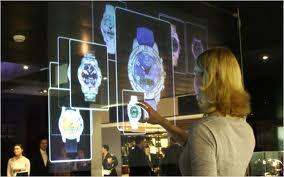Research on Brain-Computer Interface (BCI) began in the 1970s and has increased in volume and diversified significantly since then. Today BCI is widely used for applications like assistive devices for physically challenged users, mental state monitoring, input devices for hands-free applications, marketing, education, security, games and entertainment. This article explores the advantages and disadvantages of invasive and non-invasive BCI technologies and focuses on use cases of several non-invasive technologies, namely electroencephalogram (EEG), functional Magnetic Resonance Imaging (fMRI), Near Infrared Spectroscopy (NIRs) and hybrid systems.
翻译:暂无翻译
相关内容
专知会员服务
54+阅读 · 2020年1月30日
专知会员服务
34+阅读 · 2019年10月18日
专知会员服务
36+阅读 · 2019年10月17日
Arxiv
0+阅读 · 2023年11月8日
Arxiv
0+阅读 · 2023年11月8日
Arxiv
0+阅读 · 2023年11月8日
Arxiv
0+阅读 · 2023年11月7日
Arxiv
11+阅读 · 2018年5月21日




